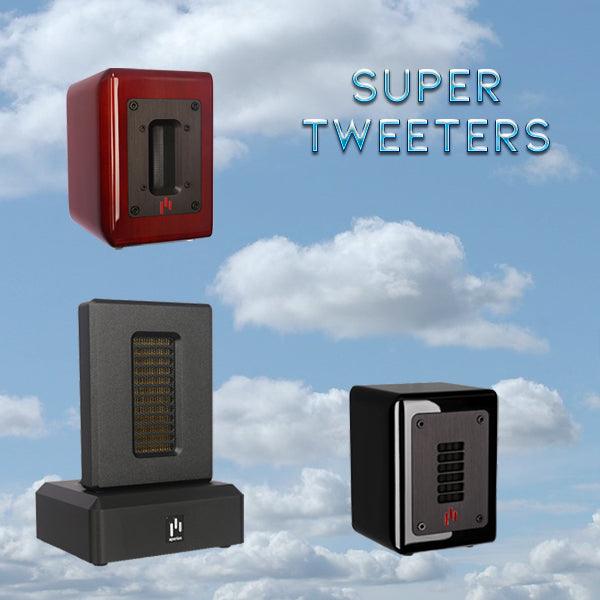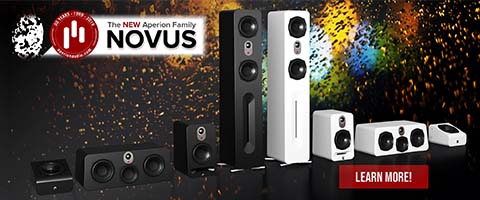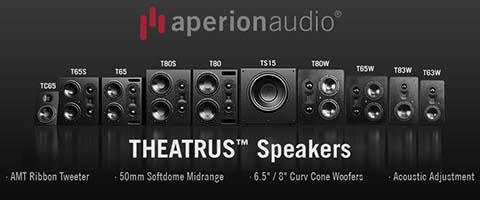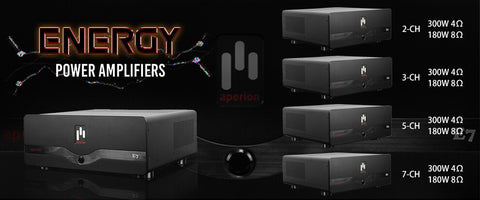The term “crossover” gets thrown around a lot in the audio community, but there always seems to be some confusion when it comes to this subject. We get a lot of inquiries on the matter here at Aperion, so here is a beginner’s primer on what this essential component of a speaker system does.

In the simplest terms, a crossover is a filter. Its job is to allow or prevent certain frequencies from passing through, as well as providing EQ and phase adjustment if necessary. This signal “traffic cop” is necessary so you don’t have the full range signal going to your tweeter, for example. It also shapes the sound to help compensate for the natural characteristics of each driver.
- - - - - - - - - - - - - - - - - - - - - - - - - - - - - - - - - - - - - - - - - - - - - - - - - - - - - - - - - - - - - - - -
Frequency
First, let’s talk about frequencies. This is literally how frequently (oscillations per second) a sound is vibrating. The number of oscillations per second is measured in Hertz (Hz). So, a 20Hz tone will vibrate 20 times per second. A lower frequency equals a lower pitch and a higher frequency is a higher pitch. Pretty easy right?! Although the standard range of hearing in most people is 20 – 20,000 Hz, humans are able to perceive frequencies beyond this range. In fact, there’s actually an entire field of study dedicated to sound waves below 20Hz, called Infrasonics. These sounds are usually “sensed” rather than heard and are often associated with earthquakes. But, some studies have shown that intense sound down in this range can actually affect people’s vestibular system making them feel sick or uneasy.
- - - - - - - - - - - - - - - - - - - - - - - - - - - - - - - - - - - - - - - - - - - - - - - - - - - - - - - - - - - - - - - -
Filters
An audio filter is a circuit that will allow a specific range of frequencies through. Here are the three types of filters:

Low-pass filter – This will allow all frequencies below the crossover point. It essentially sets a “ceiling” for the signal. This is used on woofers and is what the crossover knob on your subwoofer adjusts.

Band-pass filter – This will allow all frequencies between to points. Generally used for the midrange, this type of filter is what you can use to get that sweet lo-fi “telephone” effect.

High-pass filter – This will allow all frequencies above the crossover point. Rather than the ceiling a low-pass filter uses, this sets a “floor” for the signal.
- - - - - - - - - - - - - - - - - - - - - - - - - - - - - - - - - - - - - - - - - - - - - - - - - - - - - - - - - - - - - - - -
Drivers

A driver is a fancy term for the individual speakers in the….uh.…speaker. Each of these drivers has a limited operating range, so the crossover needs to direct the appropriate frequencies to each driver. All speakers will have some combination of a high-frequency driver (tweeter), midrange driver and low-frequency driver (woofer). The size differences in these drivers give them inherent characteristics that make them good for their specific purpose. This is why tweeters are small, woofers are big and midrange drivers are, well, mid-sized.
Low frequencies are very long (around 22ft for a 50Hz wave) and require a lot more physical air movement to produce, so you need a larger driver to move that amount of air. The opposite goes for tweeters. A 10kHz wave is just over an inch, so you’ll need a much smaller driver to produce those frequencies.
- - - - - - - - - - - - - - - - - - - - - - - - - - - - - - - - - - - - - - - - - - - - - - - - - - - - - - - - - - - - - - - -
Crossover Types
Depending on how your speaker system is setup you’ll have either a passive crossover or an active crossover.
Passive Crossover – This is the most common type of crossover and the one used in most speakers that require an external amplifier. A passive crossover takes the amplified signal and distributes it to the various drivers using a network of capacitors, resistors and inductors.
Active Crossover – This type of crossover splits the signal prior to amplification. In this design, each driver must have its own amplifier and is usually integrated together. These are most common in powered speakers. These also often use DSP to help EQ the sound.
As with anything, the quality of the components and the network design all play into the resulting voice of the speaker. The crossover must take into account all aspects of the speaker, such as the individual driver properties, the enclosure acoustics, driver positioning etc. It really is the brain of the speaker, providing its personality and the controlling factor in determining how all the components work together.

Complete Your Sound System Solution

Sign up for our newsletter below, and join our social media groups to stay up to date with the latest news and information from Aperion Audio!
 |
 |









 https://www.aperionaudio.com
https://www.aperionaudio.com